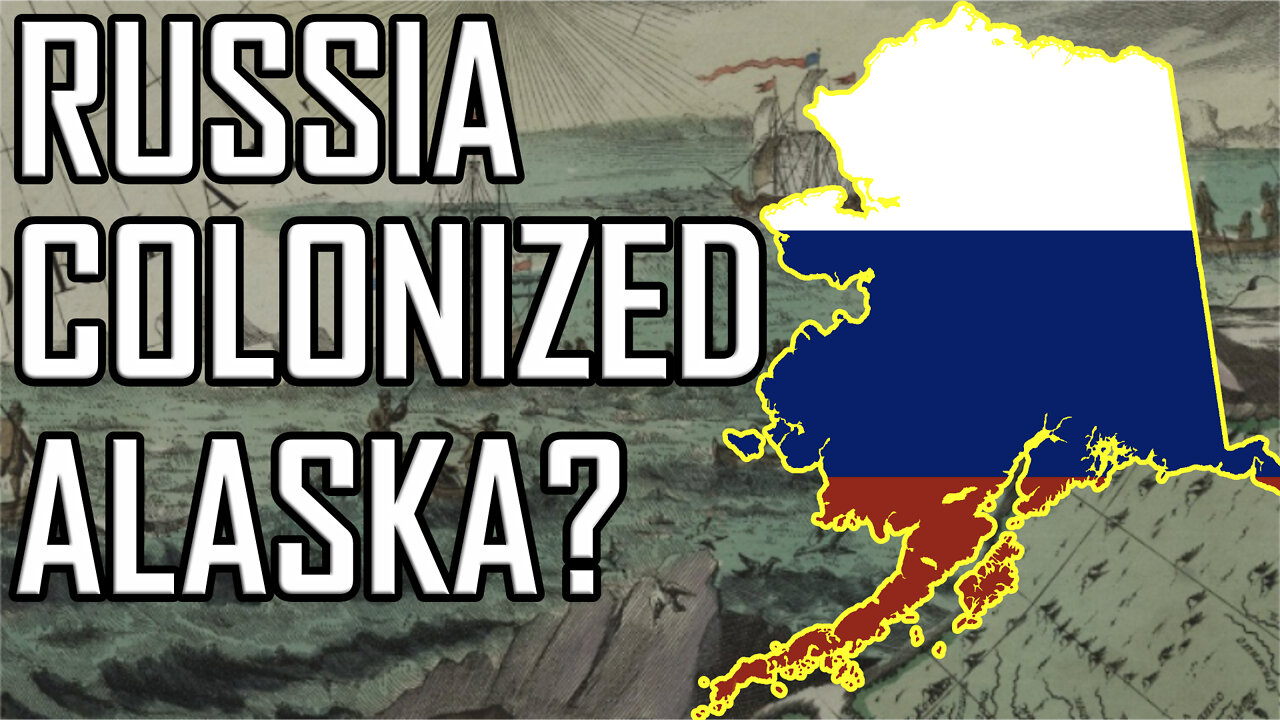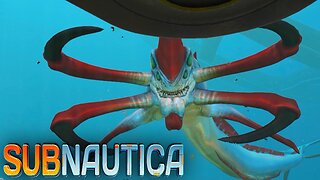Premium Only Content

The Forgotten Russian Colony: Russian Alaska.
The Russian Colonization of Alaska was one of the largely forgotten colonial adventures of the European powers. However, it played a major part in the development of Alaska, and a political dynamic change over the course of many decades. In Today's video, we will be covering this largely forgotten colony.
________________________
Support The Channel:
♥Patreon ► https://www.patreon.com/Tipsyfishs
♥PayPal ► https://www.paypal.com/paypalme/TipsyF
Twitch ► https://www.twitch.tv/tipsyfishes
Twitter ► https://www.twitter.com/Tipsyfishs
Facebook ►: https://www.facebook.com/TipsyHistory
Download TubeBuddy free ► https://www.tubebuddy.com/Tipsy
Download VidIQ free ► https://vidiq.com/#_l_28e
Since the Russian independence in the 15th century, land to the east was seen by many as a mythical place, homeland of the horse nomad, home to a secret power that great empires held, and fur... don't forget about the fur. Russian colonization of Siberia was a centuries long endeavor, and one that would catapult the state to have a massive stretch of territory, even though limited population existed the further east they claimed. The last major expeditions of this kind, was that of Semyon Dezhnev back in 1648. Dezhnev managed to sail around the eastern cape of Siberia, sail into the Bering strait, and go up the Anadyr River to found an outpost. A land-bridge between Siberia and the Americas, had been believed to have existed, and while Dezhnev was likely very un-aware of what was discovered, he proved that no such land bridge existed, and was the first recorded individual, to have sailed through the Bering straight. However, the debate still raged as to whether or not a land-bridge did exist, as his discover was not relied to the Russian government.
It wouldn't be until late 1724, when Tsar Peter the Great, once again called for expeditions. Early next year, was the first Kamchatka expedition, headed by Vitus Bering. This expedition, was set out to confirm if a strait existed between Asia and North America. This he managed to accomplished and had provided useful insights into the geography of Eastern Siberia. In total, the expedition surveyed more than 3500 km of the sea, which was later named after Bering. Its maps of the area were later used by all Western European cartographers.
But Berings work was not yet done, in 1733, Peter once again called upon his services, funding what would be known as the Great Northern Expedition. One of the largest expeditions within all of History. The expedition had a few goals, one being to find and map eastern Siberia, attempt to find a northern sea route from the Pacific to the Atlantic, and, if possible, explore the western shores of Northern America. All total, over 3,000 individuals were involved in this expedition, and it cost the Russian state 1.5 million rubles, one sixth of it's annual budget at the time. That very roughly translates to around 500 million US dollars in modern currency.
This expedition, discovered Alaska to the Europeans, as well as the Aluetin islands, four more island groups, and heavily mapped out the eastern Siberian and Kuril islands. However, the inability for Bering to travel above the North-Eastern tip of Siberia, did crush any dream, of a Atlantic, Pacific route, much to the dismay of Peter. Bering himself, work completed, did not get to enjoy any reprieve. After leaving the Alaskan coast in 1742, his ships were grounded in a storm and torn to pieces, the crew managed to winter over on an island, but there, Bering fell ill and died, buried, during his greatest discovery. The survivors of his crew, managed to return a year later, bringing back with them, high quality otter pelts, something, that interested many individuals indeed.
-
 12:03
12:03
The History Guy: History Deserves to be Remembered
3 years agoPopham: the Forgotten Colony
1.78K9 -
 1:16:36
1:16:36
Glenn Greenwald
10 hours agoGlenn Takes Your Questions: On Banning Candidates in the Democratic World, Expanding Executive Power, and Trump's Tariffs | SYSTEM UPDATE #437
126K46 -
 40:09
40:09
Friday Beers
9 hours ago $5.77 earnedWii Golf Gets Heated: Friday Beers vs Full Squad Gaming
53.7K -
 44:53
44:53
Man in America
15 hours agoThe DISTURBING Truth About Tariffs That NO ONE Is Talking About
58.5K59 -
 32:30
32:30
Stephen Gardner
8 hours ago🚨BREAKING: Trump under INVESTIGATION for Stock Market Manipulation!
62.6K150 -
 59:50
59:50
Motherland Casino
5 hours agoMel x Zofie
29.6K5 -
 44:54
44:54
Ami's House
2 days agoThe Dave Smith Debate is Broken. Here's a Better Way In | Dave's Rogan Appearance
55.5K10 -
 3:47:20
3:47:20
SlingerGames
7 hours agoDiving (get it?) Back Into Subnautica!
31.8K1 -
 58:35
58:35
BonginoReport
11 hours agoFormer Trans Athlete Accepts Biological Reality - Nightly Scroll w/Hayley Caronia (Ep.24) - 04/10/25
157K99 -
 2:48:38
2:48:38
The Sufari Hub
7 hours ago🔴NOT ENDING STREAM TILL I WIN - ROAD TO #1 GAMER ON RUMBLE - #RumbleGaming
14.6K1